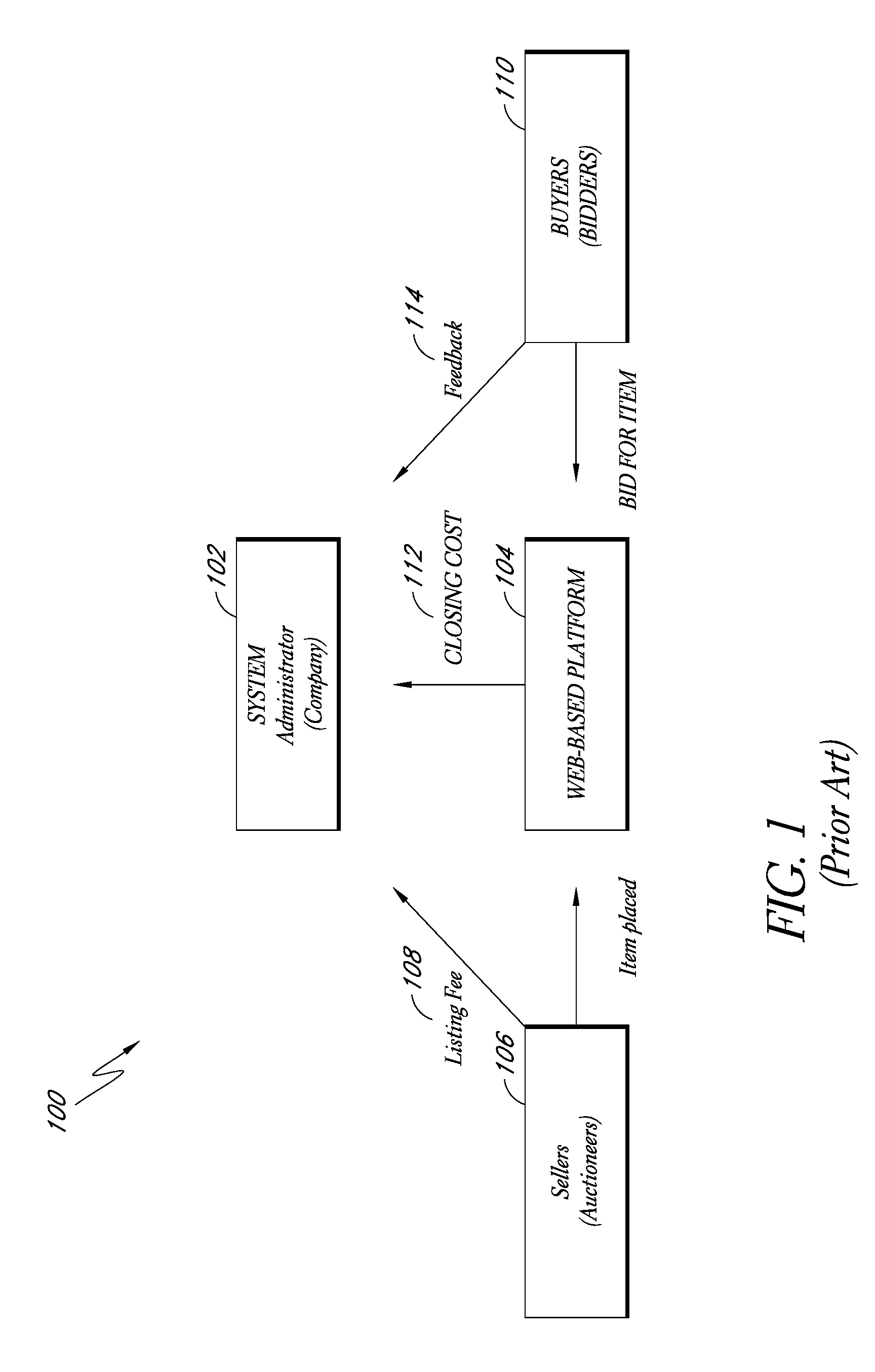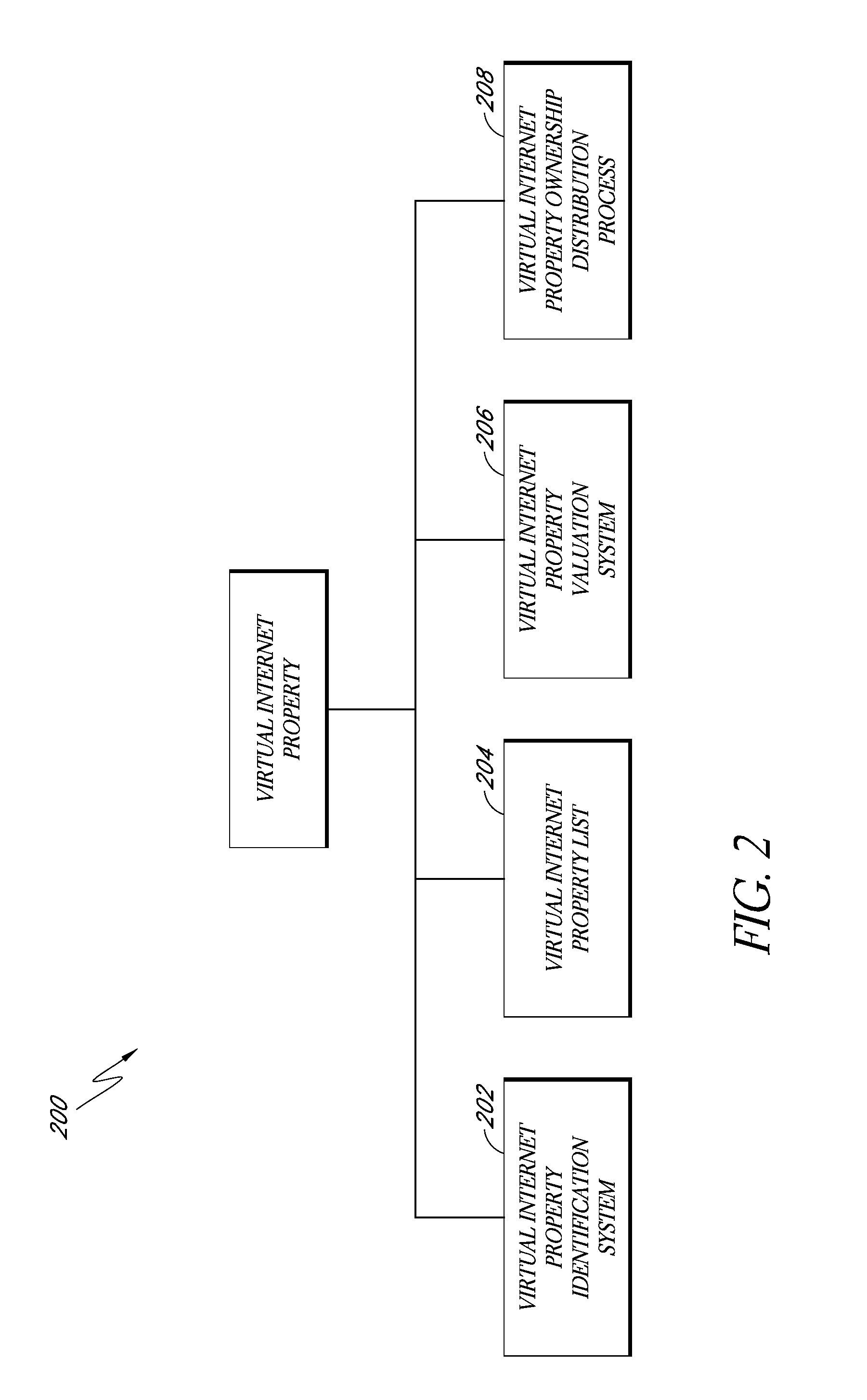Computer web-based auction platform
- Summary
- Abstract
- Description
- Claims
- Application Information
AI Technical Summary
Benefits of technology
Problems solved by technology
Method used
Image
Examples
Embodiment Construction
[0024]Reference will now be made to the drawings wherein like numerals refer to like parts throughout. FIG. 1 is a schematic overview of a conventional computer web-based auction system 100. The system 100 generally comprises a system administrator 102 who creates and operates a web-based platform 104 where goods and services can be auctioned for sale. The system administrator 102 is typically a company or organization that manages and oversees the operation of the auction platform 104. A seller (auctioneer) 106 can list goods or services on the platform 104 by paying the system administrator 102 a listing fee 108. Once the item is listed, buyers (bidders) 110 can bid on the item by accessing the online auction platform 104 via a communications medium such as the Internet.
[0025]As FIG. 1 further shows, when an item is successfully sold, the seller 106 pays the administrator 102 a closing cost 112 or commission, which is typically based on the sale price of the item. Buyers 110 can a...
PUM
 Login to View More
Login to View More Abstract
Description
Claims
Application Information
 Login to View More
Login to View More - R&D
- Intellectual Property
- Life Sciences
- Materials
- Tech Scout
- Unparalleled Data Quality
- Higher Quality Content
- 60% Fewer Hallucinations
Browse by: Latest US Patents, China's latest patents, Technical Efficacy Thesaurus, Application Domain, Technology Topic, Popular Technical Reports.
© 2025 PatSnap. All rights reserved.Legal|Privacy policy|Modern Slavery Act Transparency Statement|Sitemap|About US| Contact US: help@patsnap.com



